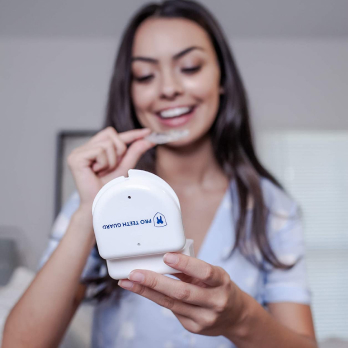Night Guard After Getting a Filling
15th Sep 2024

A night guard is essential if you grind your teeth or have jaw pain, helping protect your teeth while you sleep. But after getting a dental filling, you might wonder if you can still use the same night guard or if your night guard fits properly. Will it cause discomfort, or should you replace it? We’ll cover everything you need to know about using a night guard after getting a filling, helping you decide whether adjustments or a new mouthguard are needed.

Types of Fillings and Their Impact on Night Guard Use
In modern dentistry, the primary purpose of a filling is to repair cavities caused by plaque or tooth decay and prevent further infection of the tooth. Fillings also provide restorations of the tooth's normal function and shape, allowing you to chew and bite without discomfort.
Different types of filling treatment services may affect how your night guard fits:
- Composite Fillings (Enamel-Colored Fillings): These are common and typically cause minimal changes to your bite. If you have a composite filling, you’ll likely still be able to use your night guard without any major issues.
- Amalgam Fillings (Metal Fillings): These can be bulkier and may slightly alter your bite, which could affect how your night guard fits. You may need adjustments to your night guard if you have an amalgam filling.
The size of the filling also matters. Smaller fillings usually won’t impact your night guard much, but larger fillings might require a new guard or adjustments.
Can I Still Wear My Night Guard After Getting a Filling?
After a filling, your night guard may still fit, but it depends on the type of filling and how much it changes the shape of your tooth. Sometimes, a filling can slightly alter your bite, making the guard feel different. However, in many cases, the change is small, and you can continue using your night guard without any issues.
If the mouthpiece feels uncomfortable or the appliance doesn't fit as well, it’s best to have an appointment with your dentist. In many cases, once the mouthpiece is properly adjusted, patients often experience relief from any discomfort that may have persisted after the dental procedure.

How Long Should I Wait to Wear My Night Guard After a Filling?
In most cases, a patient can use a night guard the same day or the day after a filling. Fillings harden quickly, so it’s usually safe to wear a guard right away. Just make sure there’s no discomfort when you put it on.
Do I Need a New Night Guard After Getting a Filling?
In some cases, you may need a new mouthguard after getting a filling. It depends on how much your bite has changed. If the filling was large or altered the shape of your tooth, the old night guard may no longer fit correctly. A poor fit can cause discomfort and pressure on the filling, leading to possible damage.
However, if the change to your bite is minimal, you can likely continue using your current night guard. The key is to pay attention to how it feels. If it feels tight, uncomfortable, or doesn’t sit properly, it’s worth considering getting a new one.
Can I Adjust My Existing Night Guard After Getting a Filling?
If your night guard doesn’t fit as well after getting a filling, you may not need to replace it right away. In many cases, your dentist can adjust the existing mouth guard to ensure it fits properly with your new filling. Dentists can reshape or slightly modify the guard so that it accommodates changes in your bite.
It’s a good idea to bring your night guard to the dental office when you’re getting a filling. That way, your dentist can check the fit of your night guard after you get your filling and make any necessary adjustments.
This option is often more cost-effective than getting a completely new night guard, especially if the adjustments needed are minor. However, if the fit is too far off, it might be best to consider a new night guard to ensure comfort and protection.
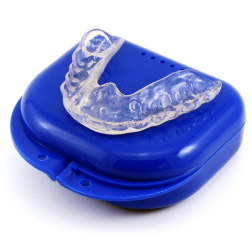
- Most Popular
- Hard Outside, Soft Inside
- 2MM Thick
- Moderate / Heavy
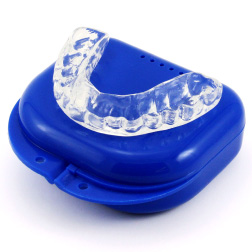
- Most Durable
- Hard Materials
- 1.5MM Thick
- Heavy / Severe
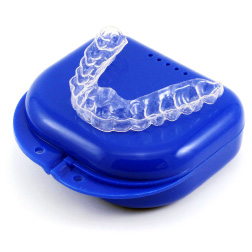
- For Day Time Use
- Thin, Barely Visible
- 1MM Thick
- Light / Moderate
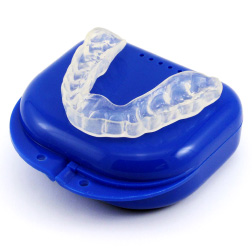
- For Clenching
- Flexible & Soft
- 1.5MM Thick
- Light / Moderate
Signs Your Night Guard No Longer Fits Properly After a Filling
It’s important to know the symptoms that your night guard might not fit well after a filling. Here are a few things to watch out for:
- Discomfort or Pressure: If your night guard feels tight or causes oral pain, it might not be fitting properly around the new filling.
- Difficulty Putting It On: If you struggle to insert your night guard, especially over the tooth with the new filling, this could be a cause of a poor fit.
- Shifting or Loose Fit: A night guard that moves around or feels loose may not provide the protection you need after a filling.
- Jaw Pain or Bite Changes: If you notice changes in how your jaw feels or how your teeth come together while wearing the night guard, it’s worth checking with your dentist.
It's always a good idea to consult your dentist after getting a filling, especially if you notice changes in how your night guard fits. If you notice any of these signs, it may be time for an adjustment or a new night guard.
Related Articles:
What to Do If You Experience Discomfort While Wearing a Night Guard After a Filling
There are several reasons why wearing a night guard after receiving a filling is essential for maintaining dental health and ensuring the longevity of both your teeth and dental work.
But if your night guard feels uncomfortable after a filling, it’s important to address the issue to avoid damaging your teeth or the new filling. Here’s what to do:
- Remove the night guard and check if it’s pressing against the filled tooth.
- Check in with your dentist if you’re unsure— they can easily adjust your guard for a better fit.
- Consider a new night guard if the discomfort persists, as the current one may no longer provide a suitable fit.
Why Is a Night Guard Important After a Dental Filling?
After you get a filling, your tooth needs time to heal and adjust. If you grind your teeth at night, it can put too much pressure on the new dental filling, which could lead to problems like cracking or chipping. A night guard could help:
- Cushion the filled tooth: It absorbs the pressure from grinding, protecting the new filling.
- Supports healing: By reducing stress on the tooth, a night guard helps it heal properly.
- Extending the life of your filling: With a night guard, your filling is less likely to get damaged, which means it can last longer.

Tips on How to Care for Your Night Guard After a Filling
Taking proper care of your night guard after getting a filling plays an important part in maintaining its longevity and ensuring it continues to protect your teeth effectively.
- Clean and Brushing Regularly: Rinse your night guard with warm water after each use and use a toothbrush with mild soap to brush its surface area for a deeper clean.
- Avoid Hot Water: Hot water can warp the material, especially for custom-fitted guards.
- Store in a Case: Keep your night guard in a ventilated case to prevent bacteria and mold buildup.
- Check for Wear: Regularly inspect your night guard for cracks or signs of wear.
Proper care ensures your night guard stays comfortable and effective, especially after dental work like fillings.
Can Night Guards Damage Fillings? Myths and Facts
There’s a common concern that wearing a night guard after getting a filling might damage the filling, but this is generally not the case. A properly fitting night guard should protect your teeth and fillings by reducing the force from grinding or clenching. However, if the night guard doesn’t fit well, it could potentially put pressure on the filling, leading to swelling or even damage.
There are several misconceptions about night guards and their effect on fillings, so let’s clear them up:
- Myth: Night guards can loosen fillings.
- Fact: A properly fitted night guard won’t loosen fillings. However, if it doesn’t fit well, it might press on the filling, causing discomfort and tooth sensitivity.
- Myth: Night guards wear down fillings.
- Fact: Night guards protect fillings by absorbing the force from grinding.
- Myth: Night guards are unsafe after dental work.
- Fact: Night guards are safe and protective post-filling when fitted properly.
Conclusion
Using a night guard after getting a filling is generally safe, but it’s important to ensure the guard fits properly. A poorly fitting night guard can cause discomfort or pressure on the new filling, so consult your dentist if you experience any issues. The reason you need a new night guard or just an adjustment depends on how much your bite has changed after the filling. Remember, a well-fitted night guard will protect both your teeth and fillings, helping to prevent further dental issues down the road.
Additionally, proper care and maintenance of your night guard will ensure its effectiveness and longevity, allowing you to safeguard your dental health and oral hygiene more effectively.
Key Points
- You can often continue using your night guard after a filling, but check the fit.
- Watch for signs of discomfort or improper fit, such as pressure on the filled tooth or difficulty wearing the guard.
- Consult your dentist if the night guard feels uncomfortable; they can adjust it or recommend a new one.
- Different types of night guards, like soft, hard, and hybrid, offer varying levels of comfort and protection.
- A properly fitted night guard protects both teeth and fillings, reducing the risk of damage from grinding and protecting your smile

- Most Popular
- Hard Outside, Soft Inside
- 2MM Thick
- Moderate / Heavy

- Most Durable
- Hard Materials
- 1.5MM Thick
- Heavy / Severe

- For Day Time Use
- Thin, Barely Visible
- 1MM Thick
- Light / Moderate

- For Clenching
- Flexible & Soft
- 1.5MM Thick
- Light / Moderate
